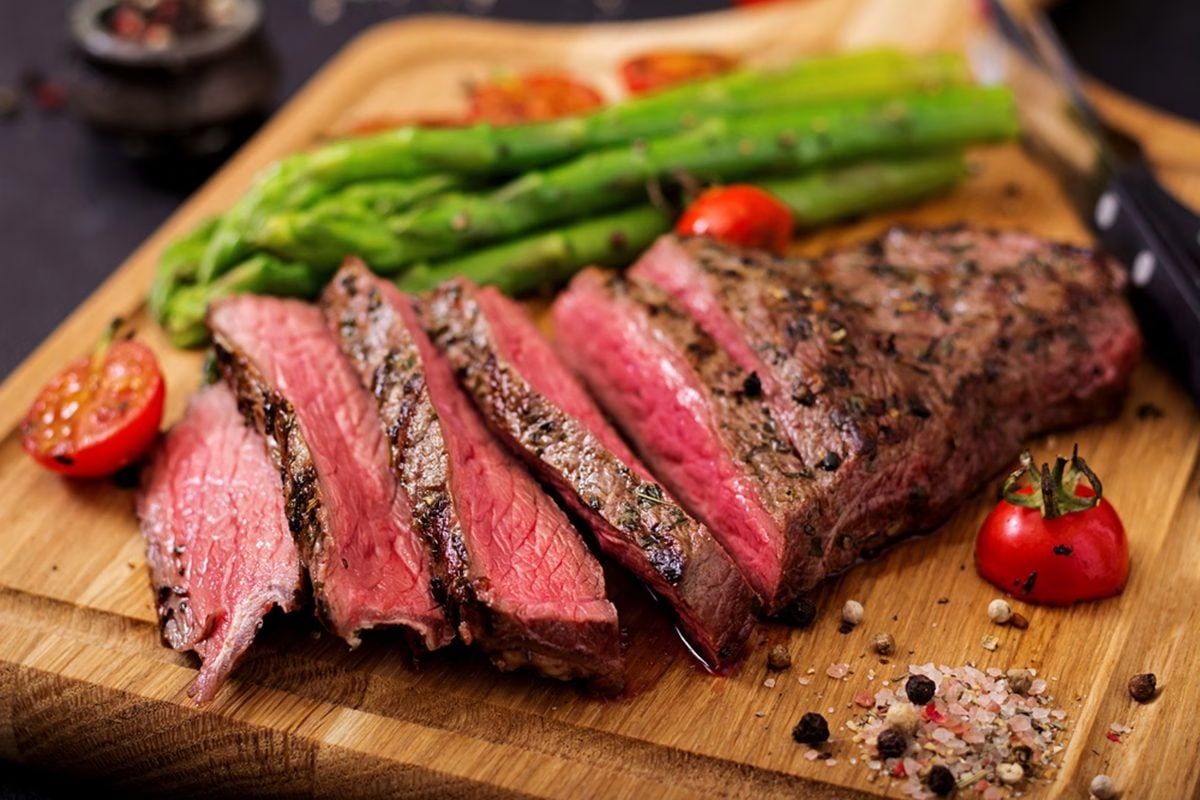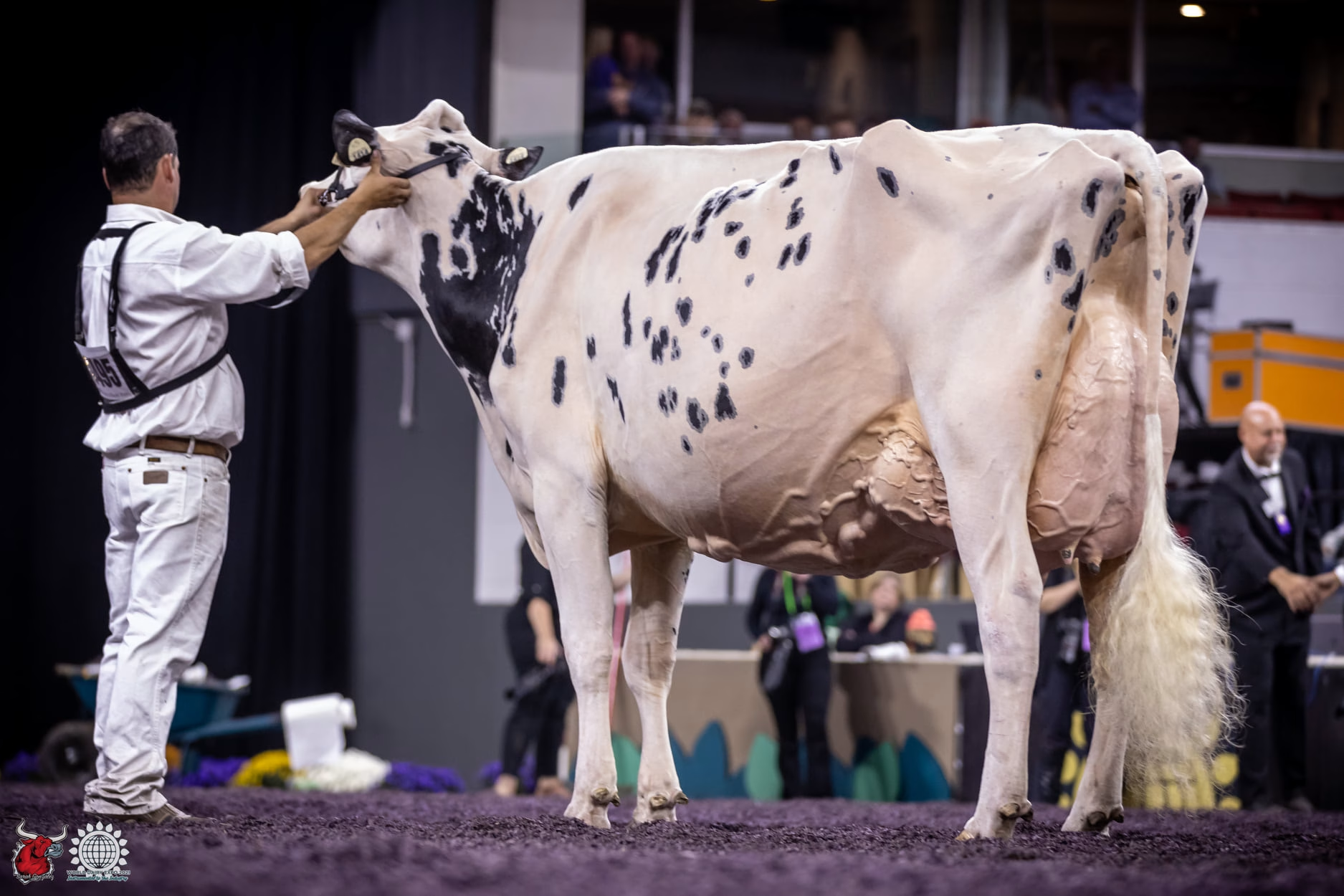Uncover the benefits of dairy-beef crossbreeding in improving beef quality. Have you ever wondered about enhanced flavor, appearance, and tenderness? Explore how this innovative practice elevates your dining experience.
Summary: Beef-on-dairy breeding is revolutionizing the beef industry by improving color stability, tenderness, and steak size and shape. This technique combines beef cattle’s rapid growth traits with dairy cows’ nutritional efficiencies, leading to superior meat quality and reduced environmental impacts. The main benefit is the creation of robust animals that can convert feed into muscle with remarkable efficiency, resulting in reduced feeding costs and a minimized carbon footprint for the beef industry. Dairy-beef crossbreeding also opens a new horizon in ethical farming practices, allowing the industry to optimize resources sustainably. Research from Washington State University reveals the critical relationship between meat appearance and marketability, with cherry red beef being a popular choice. Integrating dairy beef into traditional beef systems offers significant consumer satisfaction benefits, refining the quality and appeal of beef products and resolving industry issues like discoloration and tenderness.
- Improved Meat Color: Dairy-beef steaks have better color stability, making them more appealing to consumers.
- Enhanced Tenderness: The crossbreeding practice results in consistently tendered steaks, satisfying consumer preferences.
- Optimal Steak Size and Shape: Dairy-beef crossbreeds produce steaks with a more desirable roundness and consistent shape, which is key for the retail and food service sectors.
- Greater Sustainability: This practice promotes the efficient use of resources, reduces feeding costs, and minimizes the carbon footprint of beef production.

In the increasingly popular realm of beef-on-dairy breeding, meat scientist Blake Foraker stands at the vanguard, illuminating how this trend is revolutionizing the beef industry. Through meticulous study of the growth, development, and meat quality of these crossbred cattle, Foraker delivers pivotal insights that not only benefit producers but also aim to transform the consumer’s beef experience. He asserts, “Everything we are learning about how cattle raised for beef grow, develop, and create meat helps producers provide a better experience for the consumer.” His research reveals critical enhancements such as improved color stability, heightened tenderness, and refined steak size and shape, thereby establishing beef-on-dairy breeds as indispensable assets to the industry.
The Rise of Dairy-Beef Crossbreeding: A Game Changer
As the demand for premium beef and sustainable agricultural practices escalates, dairy-beef crossbreeding has emerged as a groundbreaking technique. This innovative method amalgamates the rapid growth traits of beef cattle with the nutritional efficiencies inherent in dairy cows. Key industry stakeholders like Blake Foraker assert that this crossbreeding paradigm not only refines beef production but also yields superior meat quality while alleviating environmental impacts.
The principal benefit of beef-on-dairy crossbreeding is the creation of robust animals adept at converting feed into muscle with remarkable efficiency. This efficiency translates to reduced feeding costs and a minimized carbon footprint for the beef industry. Research initiatives like the Dairy Beef Accelerator underscore the advantages accruing to producers, consumers, and environmental sustainability.
Consider the elevated meat quality: beef-on-dairy crossbreds are distinguished by their superior marbling and tenderness, which resonate well with consumer tastes. These qualities improve growth rates and carcass composition and benefit packers and retailers significantly. Consequently, this advancement enhances profitability and fosters a sustainable, responsibly managed beef supply chain.
Beyond economic gains, dairy-beef crossbreeding heralds a new horizon in ethical farming practices. The industry can optimize resources more humanely and sustainably by harnessing the potential of animals traditionally seen as less valuable in the dairy sector. This transformation is poised to reshape consumer attitudes, tying purchasing behaviors to broader societal and environmental advantages.
However, the shift to dairy-beef crossbreeding has its challenges. The distinct needs of these hybrid animals demand strategic adjustments by producers. Nevertheless, with persistent research and innovation, the beef industry stands well-positioned to elevate the quality and sustainability of beef products on a global scale.
Research Insights: Findings From Washington State University
The implications of this research delve deeply into consumer psychology and market dynamics, elucidating the critical relationship between meat appearance and marketability. The observed disparities in discoloration rates among native beef, dairy beef, and Holstein steaks highlight how significantly appearance influences consumer decisions.
Consumer Perceptions and Buying Patterns
Consumers underpin consumers’ preference for cherry red beef, perceived as a marker of freshness. andForaker’s The study reveals a marked decrease in consumer interest once 20% discoloration is evident, directly impacting purchasing behavior. Native beef stands out with its shelf-life longevity of up to 84 hours.
Conversely, the swift discoloration of dairy steaks, reaching 20% in just 60 hours, presents a marketing challenge. This shelf-life discrepancy can potentially erode consumer confidence in various beef products. However, crossbreeding dairy and beef cattle provides a viable solution, effectively extending the consumer acceptability window to align with the 84-hour mark of native beef.
Strategic Implications for Producers and Retailers
These findings offer a robust, data-driven framework to enhance beef marketing strategies. Producers and retailers are urged to leverage the prolonged shelf-life of dairy beef steaks to minimize waste and boost consumer satisfaction. This study underscores the imperative for ongoing research to continually adapt to shifting consumer preferences and market trends, striving to deliver visually appealing, premium-quality meat.
Consumer Preferences: How Dairy-Beef Measures Up
Examining consumer acceptability through discoloration timelines uncovers significant distinctions. Native beef steaks preserve their cherry red appearance for up to 84 hours, unlike dairy steaks, which lose their visual appeal after approximately 60 hours. This 24-hour disparity notably influences purchasing decisions, as consumers commonly shun products once they surpass the 20% discoloration benchmark.
Crossbreeding strategies have proven transformative. Dairy-beef steaks, bolstered by beef genetics, retain their desirable coloration for 84 hours, matching native beef and addressing the discoloration issues inherent in pure dairy steaks.
These findings extend beyond mere consumer satisfaction. The improved color retention of dairy-beef steaks aids in minimizing food waste and enhancing sustainability. The increased marketability duration of these steaks facilitates efficient resource utilization in production and retail, underscoring the critical role of crossbreeding in achieving consumer appeal and promoting sustainable industry practices.
Tenderness and Texture: Why Dairy-Beef Steaks Shine
Examining the link between oxidation and meat tenderness is crucial in understanding sensory attributes and tenderness. Oxidation influences both visual appeal and textural quality. Dairy steaks, being the most oxidative, may benefit from enhanced tenderness due to increased enzymatic activity breaking down muscle fibers.
The comparison of tenderness among different steaks provides valuable insights. Dairy-beef animals capitalize on the tenderness of dairy genetics while maintaining the structural integrity of beef. Foraker’s Foraker animals scored higher on tenderness than native beef steaks.
This understanding of oxidative factors and tenderness underlines the value of strategic crossbreeding. By blending desirable traits from dairy and beef genetics, producers can deliver tender, palatable meat, enhancing the beef experience.
Size and Shape: The Perfect Beef Steak
When evaluating beef’s market appeal, it’s crucial to address steak size and shape preferences within the retail and food service sectors. Crossbreeding effectively tackles the issue of inconsistent shapes in conventional dairy steaks, making them more uniform and aesthetically appealing. This consistency enhances consumer perception and improves operational efficiencies for retailers and food services.
Introducing beef genetics into dairy herds results in rounder, more consistent steaks that meet industry standards. Retailers benefit from easier merchandising, while food services ensure consistent portion sizes and presentation, thus enhancing consumer experience. This alignment between production and market needs highlights the strategic importance of beef-on-dairy practices.
These improvements enhance the commercial viability of dairy-beef products, blending efficiency with consumer-centric approaches. Embracing crossbreeding innovations promises a more profitable and sustainable future for the industry.
Challenges In Integrating Dairy-Beef Into Production Systems
Integrating dairy-beef hybrids into conventional beef production paradigms underscores unique challenges and promising opportunities distinct from traditional Holstein steers. While Holsteins presents a reliable model, they must catch up to the traits increasingly demanded by producers and consumers alike.
A principal challenge lies in aligning dairy-beef crosses’ growth rates and feed efficiencies within existing operational blueprints. Dairy breeds necessitate specialized feeding strategies and distinct management practices. Furthermore, their unique physical attributes demand tailored handling and processing methodologies.
Nevertheless, the adoption of dairy-beef crossbreeding brings considerable advantages. As Foraker’s research corroborates, these animals elevate meat quality, especially in terms of color stability and tendeForaker’slike Holsteins, whose meat succumbs to discoloration more rapidly, dairy-beef hybrids sustain a fresher appearance longer, enhancing their market appeal.
Moreover, the consistency in size and shape of steaks from dairy-beef cattle aligns more closely with consumer preferences, offering uniformly round cuts that are highly favored in retail and food service settings. This ensures optimal carcass utilization and maximizes consumer satisfaction.
Dairy-beef hybrids also exhibit superior feed efficiency and resilience to varied climatic conditions, reducing their environmental impact and bolstering sustainability. Packers and retailers increasingly acknowledge beef-on-dairy breeding practices’ enhanced profitability and ecological benefits.
In summary, while integrating dairy-beef animals necessitates significant adjustments, the resultant improvements in meat quality, sustainability, and economic return articulate a forward-thinking advancement in the beef industry.
The Bottom Line
As the beef-on-dairy crossbreeding initiative progresses, the deliberate integration of dairy beef within traditional beef systems manifests significant consumer satisfaction benefits. Leveraging the beneficial traits from beef and dairy genetics, producers are refining the quality and appeal of beef products and resolving critical industry issues such as discoloration and tenderness. This forward-thinking strategy creates a more sustainable and attractive product, guaranteeing consumers access to premium beef selections. The strides made through rigorous research and cutting-edge breeding techniques highlight the potential for a more efficient and consumer-centric beef supply chain ready to meet the dynamic needs of the market.
 Download “The Ultimate Dairy Breeders Guide to Beef on Dairy Integration” Now!
Download “The Ultimate Dairy Breeders Guide to Beef on Dairy Integration” Now!
Are you eager to discover the benefits of integrating beef genetics into your dairy herd? “The Ultimate Dairy Breeders Guide to Beef on Dairy Integration” is your key to enhancing productivity and profitability. This guide is explicitly designed for progressive dairy breeders, from choosing the best beef breeds for dairy integration to advanced genetic selection tips. Get practical management practices to elevate your breeding program. Understand the use of proven beef sires, from selection to offspring performance. Gain actionable insights through expert advice and real-world case studies. Learn about marketing, financial planning, and market assessment to maximize profitability. Dive into the world of beef-on-dairy integration. Leverage the latest genetic tools and technologies to enhance your livestock quality. By the end of this guide, you’ll make informed decisions, boost farm efficiency, and effectively diversify your business. Embark on this journey with us and unlock the full potential of your dairy herd with beef-on-dairy integration. Get Started!














